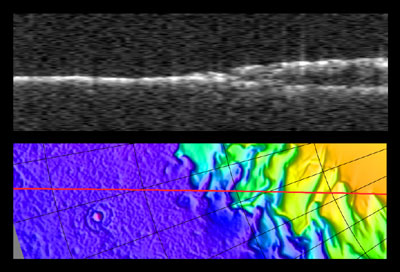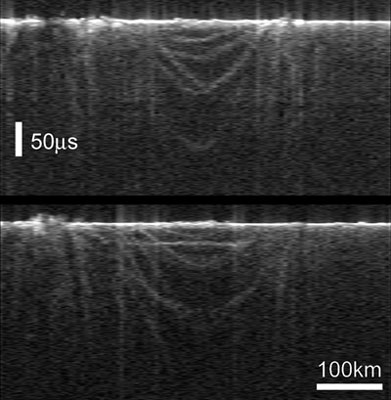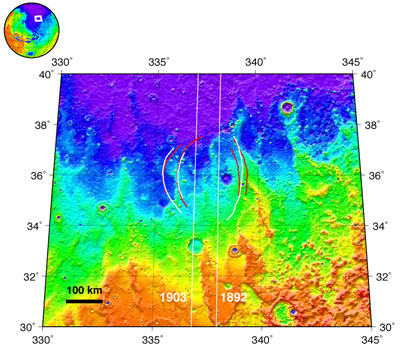The radar device that was put into use only a few months ago, which is on board the spacecraft, discovered water at a depth of over a kilometer underground

The underground ice deposits on Mars were discovered using radar
The European Mars Express spacecraft has become the first spacecraft to discover reservoirs of subsurface water ice beneath the surface of the Red Planet. This is what the mission scientists announced. The radar device that was put into use only a few months ago, which is on board the spacecraft, discovered water at a depth of over a kilometer underground.
This matched the scientists' expectations of discovering water reservoirs underground, and it is possible that these glaciers may be a habitat for life at the bacterial level. The European-American team of Marsis (the name of the radar) published the findings in the journal Science. A thick layer of ice was found under the north pole of Mars that at least the upper part contains water ice, it is almost clean water that contains only 2 percent of dust. Underneath this layer is a concrete layer - consisting of soil mixed with water that is now in a frozen state.
A large crater is buried
Another important finding of the Marsis radar is the discovery of an almost circular crater with a diameter of about 250 km buried just below a shallow layer of sand in the Charis Platania area, a low area in the middle latitudes in the northern hemisphere of Mars. This is an impact crater, which apparently contains a thick layer of water-rich materials.

An echograph of the Marcis radar shows the crater with a diameter of 250 km

A topographical map of the Chiris plain with the location of the crater
In order to study and decipher the image of the subsurface of Mars, team members from Arsis studied the echoes of the radio waves that were transmitted from the radar as they passed through the planet's soil and were then returned in a characteristic way that describes the story of the layers they penetrated.
